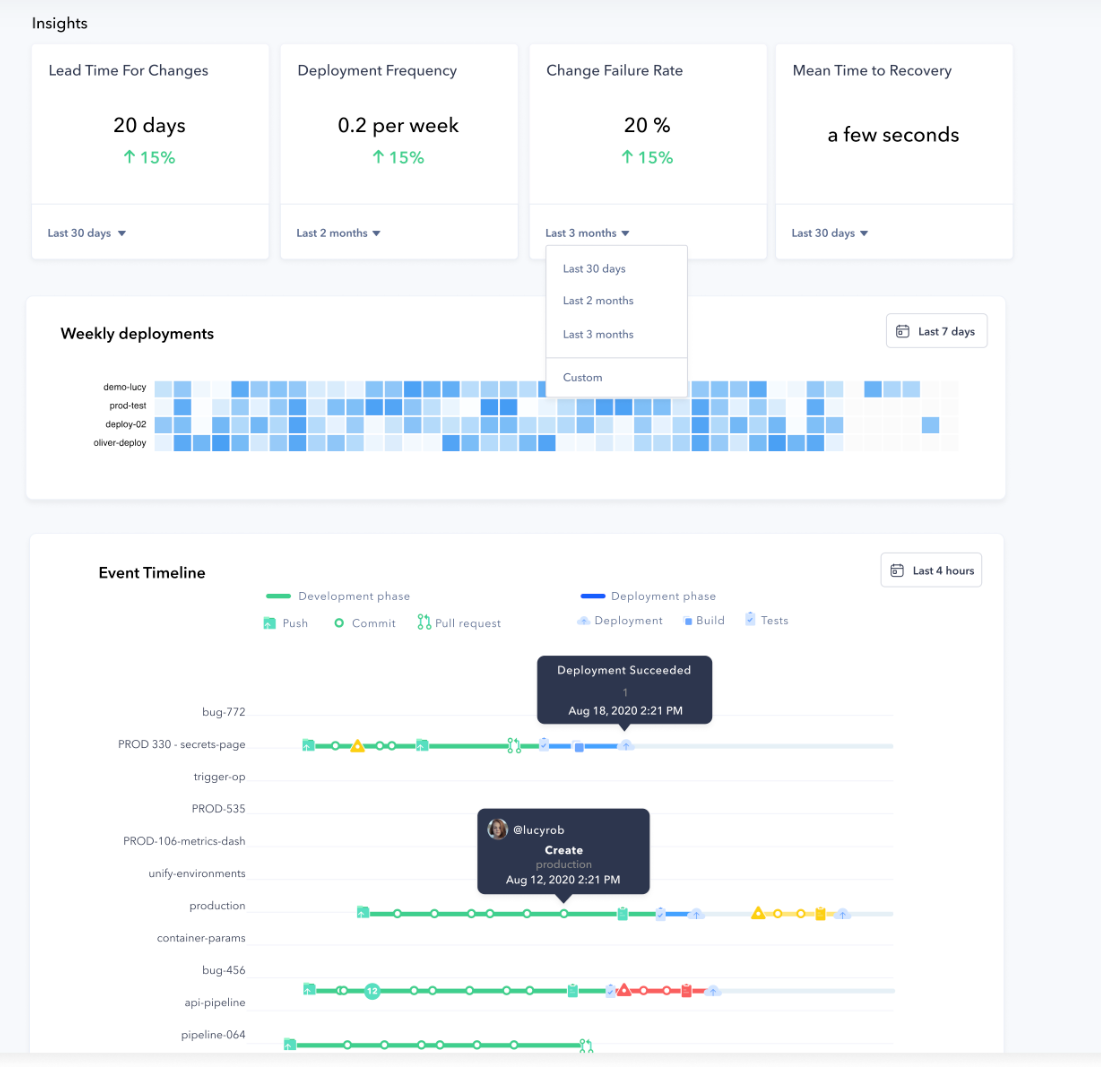CTO.ai is one of the official sponsors of the 2023 Accelerate State of DevOps Report in partnership with DORA and Google Cloud. The 2023 report will be released soon. Stay tuned here.
Introduction
In the world of software development, ensuring a top-notch Developer Experience (DX) is paramount. An excellent DX can directly influence the velocity and quality of software development, affecting both the productivity of developers and the final product's success. One effective way to measure and track improvements in DX is by using DORA metrics, which encapsulate key elements of software delivery performance. In this blog, we will discuss how to leverage DORA metrics to boost your DX.
What is DORA Metrics
DORA stands for DevOps Research and Assessment, and it represents four key metrics that measure the effectiveness of DevOps practices:
- Deployment Frequency: How often an organization deploys code to production.
- Lead Time for Changes: The duration from when code is committed to when it's successfully running in production.
- Change Failure Rate: The percentage of deployments that result in failure.
- Mean Time to Restore (MTTR): The average time it takes to recover from a failure.
While these metrics are traditionally used to assess DevOps performance, they also provide valuable insight into the developer experience. Let's delve into how they can be used to measure and track DX improvements.
Step 1: Collecting Data
Collecting the necessary data is the first step in tracking DORA metrics. Data sources might include source control systems, project management software, and CI/CD tools. It's crucial to have a well-structured process for data collection, ensuring you have all the necessary information to measure the metrics accurately.
Step 2: Measure DORA Metrics
Once the data is collected, it's time to calculate your DORA metrics:
- Deployment Frequency: Measure how often your team is deploying code. This can serve as an indicator of developer productivity and the ability to make regular, incremental improvements.
- Lead Time for Changes: Track the time from code commit to deployment. Longer lead times could indicate issues with the development or deployment processes that could be hindering developer productivity.
- Change Failure Rate: Calculate the percentage of deployments causing a failure in production. A higher rate could suggest the need for improved testing procedures, better communication among the team, or enhanced development tools.
- Mean Time to Restore (MTTR): Monitor the average time it takes to restore service after a failure. Longer restoration times could indicate deficiencies in problem-solving processes, hindering the developer experience.
Step 3: Analyzing the Metrics
After calculating the metrics, the next step is to analyze and interpret them from a developer experience perspective. For example, a longer lead time for changes could imply that developers are facing roadblocks that need addressing. Similarly, a high change failure rate might indicate that developers require better testing tools or resources.

Step 4: Implementing Improvements
The analysis of DORA metrics should provide you with valuable insights into how to improve the developer experience. Whether it's implementing new tools, improving communication, or streamlining processes, targeted changes can enhance the developer experience, leading to better productivity and software quality.
Step 5: Monitoring and Adjustment
Once improvements are implemented, it's crucial to continue monitoring the DORA metrics to measure their impact. This is where continuous monitoring comes into play. Any changes, whether positive or negative, should prompt further adjustments as necessary to ensure the continued enhancement of the developer experience.
Measuring and Tracking DX Improvements
- Automate data collection: Automating the collection of DORA metrics ensures accuracy and efficiency. Modern DevOps tools like CTO.ai offer built-in DORA metric tracking for this purpose.
- Regular feedback and improvements: To make sure that improvements in DX are being felt by the developers, regular feedback sessions are necessary. These can help identify any gaps in the process that might not be captured by the metrics.
Using DORA Metrics for DX
While DORA metrics provide a quantitative way to measure DX, it's essential to remember that DX also involves qualitative aspects like how enjoyable the platform is to use, or how easy it is to find and access resources. By combining DORA metrics with regular developer feedback, you can gain a fuller picture of your DX.
As a general strategy, aim for small, incremental improvements in your DORA metrics. Sudden, dramatic changes can be disruptive and might not result in the desired improvements.

DORA Metrics for Continuous Improvement with CTO.ai
Ready to supercharge your Developer Experience? Start using DORA metrics with CTO.ai today to uncover valuable insights into your development process. Remember, a positive Developer Experience isn't just about creating a great working environment — it's about driving efficiency, productivity, and innovation. Start your journey towards an optimized Developer Experience by integrating DORA metrics into your daily processes by signing up on our platform.

Comments